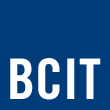Error message
- Notice: Undefined index: data in islandora_rightsstatements_get_html() (line 51 of /var/www/drupal7/sites/all/modules/islandora_badges/modules/rightsstatements/includes/utilities.inc).
- Warning: get_object_vars() expects parameter 1 to be object, null given in islandora_rightsstatements_get_html() (line 51 of /var/www/drupal7/sites/all/modules/islandora_badges/modules/rightsstatements/includes/utilities.inc).
- Warning: get_object_vars() expects parameter 1 to be object, null given in islandora_rightsstatements_get_html() (line 52 of /var/www/drupal7/sites/all/modules/islandora_badges/modules/rightsstatements/includes/utilities.inc).
- Warning: get_object_vars() expects parameter 1 to be object, null given in islandora_rightsstatements_get_html() (line 53 of /var/www/drupal7/sites/all/modules/islandora_badges/modules/rightsstatements/includes/utilities.inc).
- Warning: get_object_vars() expects parameter 1 to be object, null given in islandora_rightsstatements_get_html() (line 54 of /var/www/drupal7/sites/all/modules/islandora_badges/modules/rightsstatements/includes/utilities.inc).

